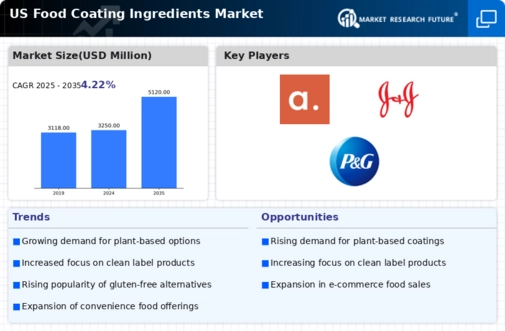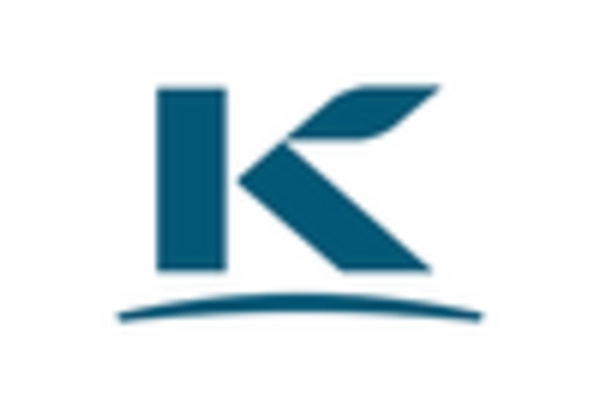Expansion of the Snack Food Sector
The food coating-ingredients market is significantly influenced by the expansion of the snack food sector in the United States. With the increasing consumption of snacks, particularly among younger demographics, the demand for innovative and flavorful coatings is on the rise. The snack food industry is projected to reach a market value of over $100 billion by 2025, which directly impacts the food coating-ingredients market. Coatings that enhance flavor, texture, and visual appeal are becoming essential for manufacturers aiming to capture consumer interest. This growth in the snack food sector is likely to drive innovation in food coating-ingredients, as companies seek to develop unique formulations that cater to evolving consumer tastes and preferences.
Growing Demand for Clean Label Products
The food coating-ingredients market is experiencing a notable shift towards clean label products, driven by consumer preferences for transparency and natural ingredients. As consumers become increasingly health-conscious, they seek products that are free from artificial additives and preservatives. This trend is reflected in the market, where clean label ingredients are projected to account for approximately 30% of the total food coating-ingredients market by 2026. Manufacturers are responding by reformulating their products to meet these demands, which is likely to enhance the appeal of food coatings in various applications, including snacks and baked goods. The emphasis on clean labels not only aligns with consumer expectations but also supports the overall growth of the food coating-ingredients market, as brands strive to differentiate themselves in a competitive landscape.
Increased Focus on Food Safety and Quality
The food coating-ingredients market is significantly impacted by the heightened focus on food safety and quality standards. Regulatory bodies in the United States are continuously updating guidelines to ensure that food products meet safety requirements. This emphasis on safety is prompting manufacturers to invest in high-quality ingredients and rigorous testing processes. As a result, the food coating-ingredients market is likely to see a shift towards more reliable and safe coating solutions. Companies that prioritize food safety are expected to gain a competitive edge, as consumers become more discerning about the products they choose. This trend may lead to increased collaboration between ingredient suppliers and food manufacturers to ensure compliance with safety standards.
Rising Interest in Plant-Based Alternatives
The food coating-ingredients market is witnessing a surge in interest surrounding plant-based alternatives, reflecting broader dietary trends. As more consumers adopt vegetarian and vegan lifestyles, the demand for plant-based coatings is increasing. This shift is supported by a growing body of research indicating the health benefits associated with plant-based diets. The market for plant-based food products is expected to grow at a CAGR of 11% through 2027, which could significantly influence the food coating-ingredients market. Manufacturers are likely to invest in developing innovative plant-based coatings that not only meet consumer expectations for taste and texture but also align with their dietary choices. This trend may lead to a diversification of product offerings within the food coating-ingredients market.
Technological Advancements in Coating Processes
Technological advancements in coating processes are playing a crucial role in shaping the food coating-ingredients market. Innovations such as spray drying, extrusion, and advanced encapsulation techniques are enhancing the efficiency and effectiveness of food coatings. These technologies allow for better flavor retention, improved texture, and longer shelf life of coated products. As manufacturers increasingly adopt these advanced techniques, the food coating-ingredients market is likely to benefit from enhanced product quality and consistency. Furthermore, the integration of automation and smart technologies in production processes may lead to cost reductions and increased scalability, positioning companies to better meet the growing demands of consumers.

















Leave a Comment